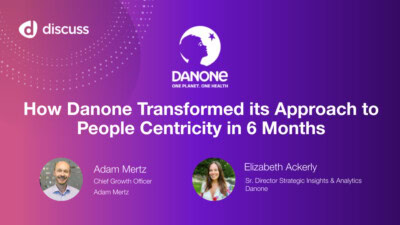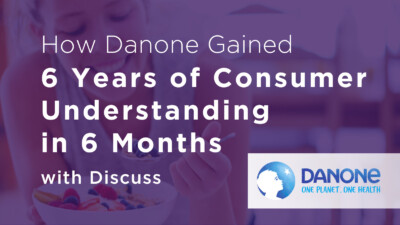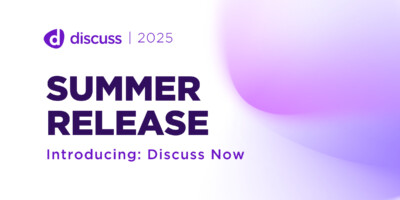TMRE Nashville Roundup: 3 Key Takeaways on the Transformation of Market Research
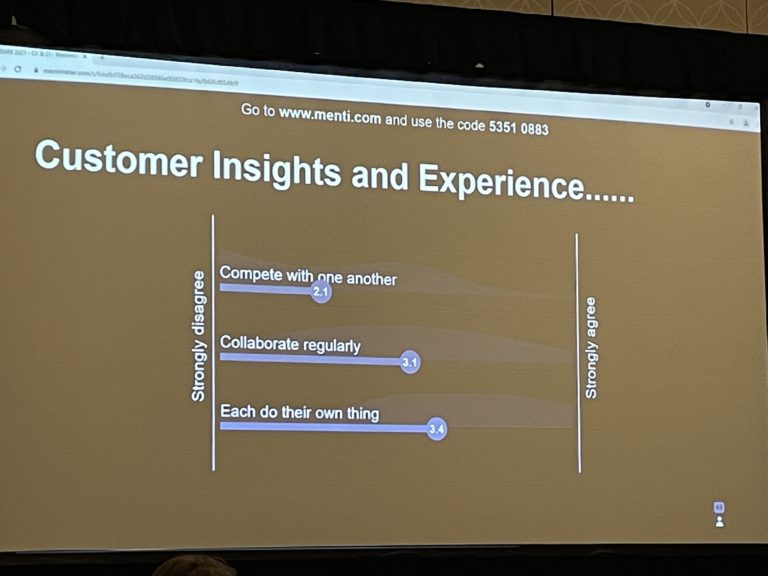
The Market Research Event (TMRE) that took place last week in Nashville gave an interesting snapshot into the state of the market research, CX and UX at a major inflection point.
Hitting the expo floor in Nashville, it was exciting to see so many masked attendees moving (safely) through the booths — I took heart knowing that there’s a strong appetite to learn about the future of consumer insights, as evidenced by the rich conversations I had with visitors to the Discuss.io booth wanting hear more about turning experiences into insights.
The event started out strong with TMRE’s first keynote speaker in two years, Kirti Singh, Chief Analytics and Insights Officer at Procter & Gamble, who explained how to anticipate market trends as consumer engagement with brands is shifting. Kirti outlined how P&G is innovating not just with the power of big data, but is also looking to behavioral sciences to create the next S-curve of Analytics & Insights.
1. The Customer Experience and Consumer Insights convergence continues
There were many great sessions, but one in particular that stood out was a panel discussion led by Laura Naylor, SVP at C Space, with insights leaders from Bed Bath & Beyond and McDonald’s. The discussion provided more strong evidence of the convergence of Consumer Insights and Customer Experience and, thanks to their live poll, I could see that half of the audience said these respective teams are currently reporting into the same executive – typically a Chief Customer Officer or Chief Customer Success Officer. The poll and panel conversation suggests that we’ll continue to see more convergence in the management of insights, customer experience, and user experience teams in the future.
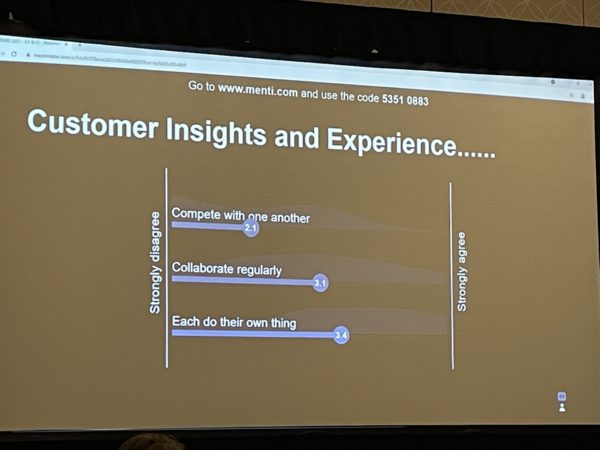
But how closely are these teams really working together today? That was the topic the audience responded to shortly after the first poll. The results gave an indication that although teams aren’t typically competing with one another, they are more likely to do their own thing. As these teams continue to converge under the same leader, I can see more collaboration around consumer closeness and empathy — a great win for organizations seeking to deliver better experiences to people.
2. Agile market research – many want it, yet are still working to better understand it
With several sessions and a masterclass focused on leveraging an agile framework for market research, there’s an undeniable amount of interest in applying principles or frameworks that help drive research leading to better, faster and more customer-informed decisions. However, based on all of the dialog I observed in sessions, many organizations are still painting a picture of what agile means in very broad strokes. Although, at its simplest form, agile is about being faster, it’s important to really think about agile as an interactive research methodology that incorporates a ‘test and learn’ mindset.
(To learn more about agile qualitative market research, read Discuss.io Co-Founder and Chief Strategy Officer Jim Longo’s post on the topic).
From the discussions I observed at TMRE, I noted that many organizations have only scratched the surface when it comes to being more agile. But with more great presentations and dialog, I suspect there will be more organizations looking to move in this direction in 2022. To that end, I would be remiss if I didn’t mention how much I agree that this is a critical framework more organizations should be adopting. I’ve spoken with several of our own customers that are already adopting this framework.
Some, like Reckitt, have employed our People Experience Platform to drive both a consumer empathy program as well as what could be considered the start of an agile market research process. If you’re interested in learning more, here are 4 quick use case videos where Reckitt’s Global Insights and Analytics Manager describes some of their success to date.
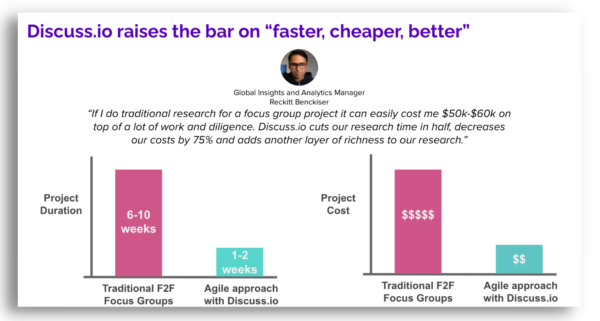
3. Consumer closeness and empathy at scale are becoming more of a reality
Although I may be a little biased, another major session highlight was our own Jim Longo and his presentation as part of the disruptor speaker series. His session, “The 5 Critical Requirements to Enabling Consumer Closeness at Scale” explained how some of the world’s largest brands are rethinking their strategies for driving customer centricity and empathy throughout their organizations systematically.
At Discuss.io, we’ve worked on programs to drive consumer closeness for enterprise organizations for several years, managing everything from executive adoption strategy to creating KPIs and playbooks. Jim’s session brought home the fact that consumer closeness isn’t just a function, it’s a strategic mindset that now requires cutting edge technology to conduct structured conversations and accelerate insights.
If I were to sum up these key takeaways, I think it’s safe to say: EVERYTHING has changed. Organizations are realizing that it’s more important than ever to truly understand what’s in the minds of their end users and customers. As part of that awareness, there’s more energy (and pressure) than ever before to gain deep insights — not just to look at surface level, quantitative data, but to have more people within the organization feeling connected to customers.
In order to achieve this, there’s no doubt that CI, CX, UX and all research teams need better tools that enable richer insights to drive more informed decisions quickly. I’m excited that Discuss.io is working with and enabling so many global organizations, and agencies, in this time of transformation and look forward to supporting these key trends in 2022 and beyond!
Ready to unlock human-centric market insights?
Related Articles
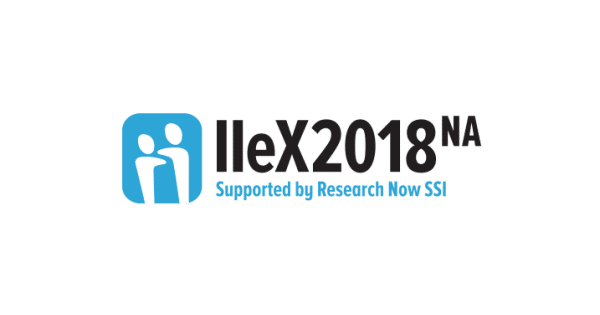
The Role of Insights in Consumer Journey – IIeX NA
Every year, the biggest leaders in innovation within the Insights world come together in Atlanta for IIeX NA. This year,
Every year, the biggest leaders in innovation within the Insights world come together in Atlanta for IIeX NA. This year,
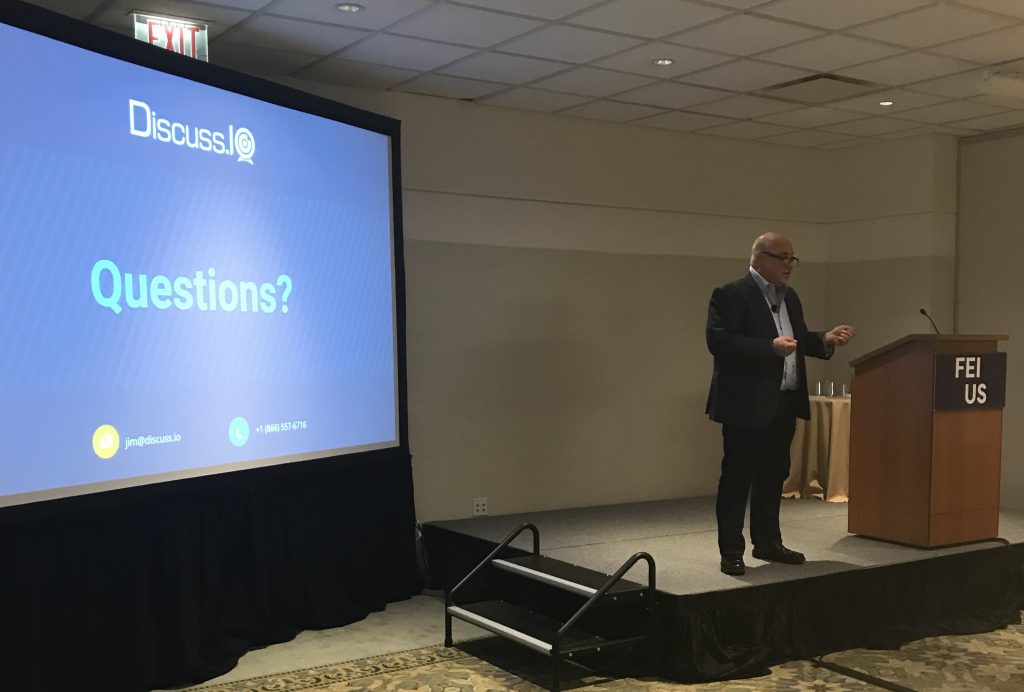
Principles of Innovation: Access the Voice of the Consumer Early & Often
Have you ever been in a room and felt a buzz in the air? Like everyone there is on their
Have you ever been in a room and felt a buzz in the air? Like everyone there is on their

Learnings from IIeX Health 2018: Be Clear and Show Impact
We attended IIeX Health 2018 in Philadelphia this week and by all measures it was a groundbreaking event...
We attended IIeX Health 2018 in Philadelphia this week and by all measures it was a groundbreaking event...
